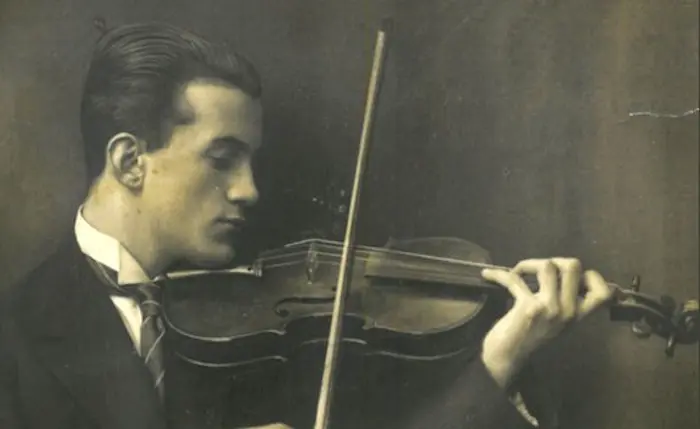Nikos Skalkottas was a Greek composer whose works have often been overshadowed by the more prominent figures of 20th-century classical music. However, his contributions to the modernist movement and his innovative compositions have left an indelible mark on the history of music. This article delves into the life, works, and influence of Nikos Skalkottas, shedding light on the significance of his contributions to classical music.
I. Early Life and Musical Beginnings
A Promising Young Musician
Nikos Skalkottas was born on March 21, 1904, in Halkis, Greece. From a young age, it was evident that he had an extraordinary talent for music. His father, who was also a musician, recognized Nikos’s potential and nurtured his early musical education. By the age of five, Skalkottas began learning the violin, quickly mastering the instrument.
Studies in Athens
At the age of nine, Skalkottas moved to Athens to study at the Athens Conservatoire, one of the most prestigious music schools in Greece. There, he studied violin under Tony Schultze and composition under Leonidas Zoras and Manolis Kalomiris. His exceptional abilities were soon recognized, and he was awarded a scholarship to continue his studies in Berlin.
II. The Berlin Years
Transition from Violin to Composition
In 1921, Skalkottas traveled to Berlin, where he enrolled in the Hochschule für Musik. Initially, he continued his violin studies under Willy Hess. However, his passion for composition soon took over, and he decided to focus entirely on creating music. Under the tutelage of some of the leading composers and theorists of the time, including Kurt Weill and Arnold Schoenberg, Skalkottas developed his unique compositional voice.
Schoenberg’s Influence
Arnold Schoenberg, one of the pioneers of the 12-tone technique, had a profound influence on Skalkottas. Schoenberg’s method of composing with twelve tones became a significant element in Skalkottas’s works. However, Skalkottas did not merely imitate Schoenberg’s style; he adapted it to create his own distinct musical language.
Early Compositions
During his time in Berlin, Skalkottas composed several works that demonstrated his mastery of modernist techniques. These compositions, which included chamber music, orchestral works, and solo pieces, showcased his ability to blend traditional Greek elements with the avant-garde trends of the time.
III. Return to Greece and Struggles
A Difficult Homecoming
In 1933, Skalkottas returned to Greece due to financial difficulties and the rise of the Nazi regime in Germany. However, his return was not met with the success he had hoped for. The Greek musical community was largely conservative, and Skalkottas’s modernist style was not well received.
Employment and Financial Struggles
Upon his return, Skalkottas struggled to find steady employment. He worked as a violinist in various orchestras, including the Athens State Orchestra, but his financial situation remained precarious. Despite these challenges, he continued to compose prolifically, often in isolation.
The Influence of Greek Folk Music
During this period, Skalkottas began to incorporate elements of Greek folk music into his compositions. This fusion of traditional Greek music with modernist techniques created a unique sound that set his works apart from those of his contemporaries.
IV. Major Works and Compositional Style
The 36 Greek Dances
One of Skalkottas’s most famous works is the “36 Greek Dances,” composed between 1931 and 1936. This collection of dances is a testament to his ability to blend folk music with modernist techniques. Each dance is based on a traditional Greek melody, which Skalkottas then transforms through complex harmonies and rhythms. The “36 Greek Dances” remain some of his most performed and recorded works.
Symphonic Works
In addition to his “Greek Dances,” Skalkottas composed several symphonic works that reflect his mastery of orchestration and form. His symphonies and orchestral suites often feature intricate contrapuntal textures and bold harmonic progressions, showcasing his command of the orchestra.
Chamber Music
Skalkottas’s chamber music is equally innovative. His string quartets, piano trios, and solo pieces are characterized by their complexity and emotional depth. These works often explore the extremes of dynamics and timbre, pushing the boundaries of traditional chamber music.
12-Tone and Serial Techniques
While Skalkottas was heavily influenced by Schoenberg’s 12-tone technique, he did not adhere to it strictly. Instead, he used it as one of many tools in his compositional arsenal. His works often feature a combination of tonal, atonal, and serial techniques, creating a rich and varied musical language.
V. Legacy and Influence
A Composer Ahead of His Time
Nikos Skalkottas’s music was largely ignored during his lifetime, both in Greece and internationally. However, his innovative use of modernist techniques and his ability to blend these with traditional Greek elements have since been recognized as groundbreaking. Today, Skalkottas is considered one of the most important Greek composers of the 20th century.
Rediscovery and Revival
In recent decades, there has been a resurgence of interest in Skalkottas’s music. Performances and recordings of his works have increased, and scholars have begun to study his compositions more closely. This renewed attention has led to a greater appreciation of his contributions to modern classical music.
Influence on Modern Greek Composers
Skalkottas’s influence can be seen in the works of many modern Greek composers who followed him. His willingness to experiment with form and harmony, as well as his incorporation of folk music, paved the way for future generations of Greek composers to explore new musical possibilities.
See Also: Exploring Semi-Classical Music: A Fusion of Tradition and Innovation
VI. Conclusion
Nikos Skalkottas was a composer who, despite facing numerous challenges, remained dedicated to his art. His innovative use of modernist techniques, combined with his deep connection to Greek musical traditions, resulted in a body of work that is both complex and emotionally powerful. Although his music was not widely recognized during his lifetime, his legacy as a pioneer of modern classical music continues to grow. As more of his works are performed and studied, it is clear that Skalkottas’s contributions to music will not be forgotten.

